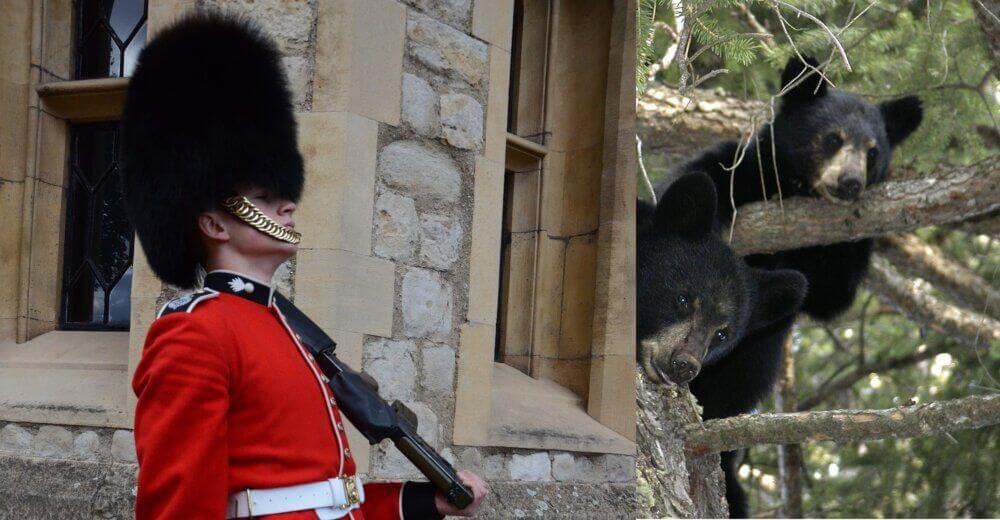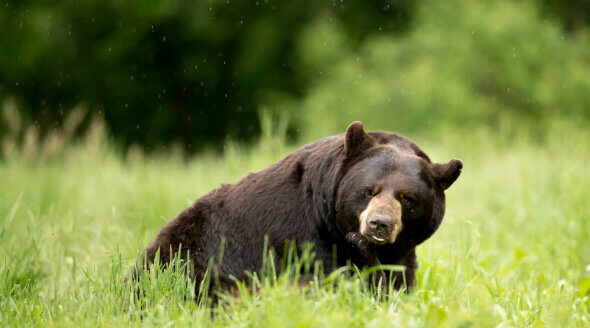Ministry of Defence Misleading Public With Furmark Certification
PETA has recently obtained correspondence between the Ministry of Defence (MoD) and a member of the public regarding the purely ornamental bearskin caps worn by the King’s Guard. In the letter, the MoD aligns itself with Furmark – a controversial fur industry marketing scheme that is nothing more than an attempt to humane-wash the cruelty inherently in the fur trade. Even former British Fur Trade Association CEO Mike Moser called Furmark a “meaningless” scheme that seeks to “sugar-coat the truth behind this … cruel trade”.
In the case of the bearskins used for the guards’ caps, Furmark accreditation simply means that the fur comes from auction houses that only sell pelts from hunters who had permits, which is already a legal requirement.
The MoD misleadingly claims that the scheme “guarantees animal welfare”, even though it is acceptable under the scheme to hunt and kill bears with crossbows, a form of hunting that has been banned in the UK since 1965.
This nonsense certification is a poor attempt by the MoD to justify its support of bear slaughter.
The MoD Refuses to Implement Faux Fur
Despite decades of assurances to the public and MPs that it would drop fur once a suitable replacement was found, the MoD has refused to move forward with a state-of-the-art faux fur developed by PETA and luxury faux furrier ECOPEL.
Tests have revealed the material is waterproof and mimics real bear fur in both appearance and performance. It’s proved to perform as well as or better than real bear fur against the MoD’s five criteria for a faux bear fur.
Instead of implementing this viable solution – and aligning itself with the morals and values of our society – the MoD is supporting an accreditation scheme that attempts to present the slaughter of animals for their fur as ethical.
Each Cap Claims a Life
It takes the skin of at least one bear to make a single cap. According to public records obtained by PETA, the MoD purchased 498 bearskin hats in the six-year period between 2017 and 2022. This equates to the death of upwards of 498 living, feeling beings, which is particularly outrageous given that a faux bear fur has been available since 2017.
Many bears are shot several times, and some escape only to bleed to death. During spring hunts, nursing mothers may be killed and leave behind cubs who starve to death without them.
Join the Campaign
Tell the secretary of state for defence that ornamental caps should not be made from the fur of slaughtered bears:





